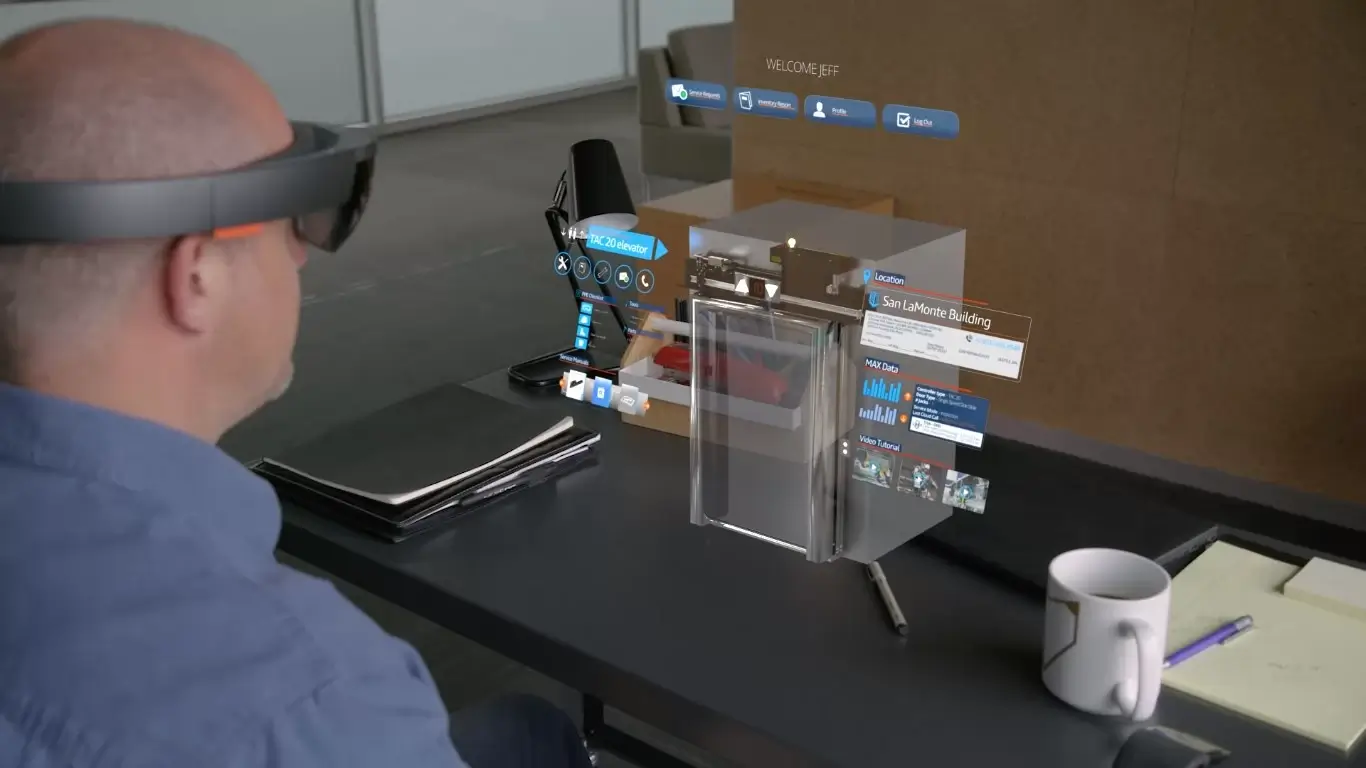AR Training
The Augmented Reality Training Experience at Asfan Company
What is augmented reality training?
Introduction:
In the ever-evolving landscape of workforce training, companies are constantly seeking innovative methods to enhance learning outcomes and employee engagement. Among the forefront technologies driving this evolution is augmented reality (AR), which overlays digital information onto the real world. Asfan Company, a leading player in the realm of corporate training, has embraced AR as a transformative tool to revolutionize its training programs. This article delves into the intricacies of Asfan's augmented reality training initiatives, exploring its implementation, benefits, and future prospects.
Implementing augmented reality training :
Asfan Company recognized the potential of AR to revolutionize its training processes, particularly in industries where hands-on experience is crucial. Leveraging advanced AR platforms and technologies, Asfan embarked on a journey to integrate immersive digital experiences into its training modules. Collaborating with industry experts and tech innovators, the company developed bespoke AR applications tailored to the specific needs of its workforce.
The implementation process involved meticulous planning, content development, and technical integration. Asfan's training experts worked closely with AR developers to create interactive simulations, virtual scenarios, and guided tutorials. These AR modules were seamlessly integrated into existing training curricula, augmenting traditional methods with immersive digital experiences.
Benefits of AR training:

The adoption of AR training has yielded a myriad of benefits for Asfan Company and its employees. One of the most significant advantages is enhanced learning retention. Studies have shown that immersive experiences foster deeper engagement and knowledge retention compared to traditional training methods. By simulating real-world scenarios in a controlled environment, AR empowers employees to learn by doing, accelerating the acquisition of new skills and competencies.
Moreover, AR training promotes safety and risk mitigation. In industries such as manufacturing, construction, and healthcare, where safety is paramount, hands-on training can be inherently risky. AR allows employees to practice complex procedures and hazardous tasks in a safe virtual environment, minimizing the potential for accidents and injuries.
Another notable benefit is the scalability and flexibility of AR training:
Unlike conventional training programs that require physical infrastructure and logistical arrangements, AR modules can be accessed anytime, anywhere, using compatible devices. This scalability enables Asfan to train geographically dispersed teams efficiently, reducing training costs and logistical complexities.
Furthermore, AR training fosters a culture of innovation and continuous learning within the organization. By embracing cutting-edge technologies, Asfan demonstrates its commitment to staying ahead of the curve and equipping its workforce with the skills needed to thrive in a rapidly evolving marketplace.
Future prospects:

Looking ahead, Asfan Company remains committed to pushing the boundaries of AR training and exploring new frontiers in immersive learning. The company plans to expand its AR initiatives to encompass a wider range of training programs and industry verticals. Additionally, Asfan is exploring the integration of artificial intelligence (AI) and machine learning (ML) algorithms to personalize AR experiences based on individual learning styles and performance metrics.
Moreover, Asfan aims to leverage AR as a tool for on-the-job support and performance enhancement. By equipping employees with AR-enabled devices, such as smart glasses or wearable gadgets, Asfan empowers workers to access real-time information, instructions, and troubleshooting guides directly within their field of view. This seamless integration of AR into daily workflows promises to drive operational efficiency and productivity gains across the organization.
How do you study augmented reality?
Studying augmented reality (AR) involves a multidisciplinary approach that encompasses various fields
such
as computer science, human-computer interaction, psychology, design, and engineering. Here's a general
framework
for studying augmented reality:
-
Understanding the Fundamentals: Begin by learning the basics of augmented reality, including its definition, history, and core principles. This involves understanding how AR overlays digital information onto the real world, the different types of AR systems (e.g., marker-based, marker less, projection-based), and the underlying technologies (e.g., computer vision, tracking algorithms).
-
Technical Skills: Gain proficiency in the technical skills required for developing AR applications. This includes knowledge of programming languages (e.g., C#, C++, Java), development environments (e.g., Unity, Unreal Engine), and AR frameworks (e.g., ARKit, ARCore). Additionally, understanding concepts like 3D modeling, rendering, and spatial mapping is crucial for creating immersive AR experiences.
-
Human-Centered Design: Study the principles of human-centered design and user experience (UX) design as they apply to augmented reality. Learn how to design intuitive user interfaces, interaction techniques, and navigation systems that optimize user engagement and usability in AR environments.
-
Psychological and Cognitive Aspects: Explore the psychological and cognitive aspects of augmented reality. This involves studying how users perceive and interact with AR content, the impact of AR on attention, memory, and learning, and the potential psychological effects of immersion and presence in AR experiences.
-
Applications and Use Cases: Investigate the diverse applications and use cases of augmented reality across various industries and domains. This includes examining how AR is used in fields such as education, healthcare, entertainment, retail, manufacturing, and maintenance. Analyze case studies and real-world examples to understand the practical implications and potential benefits of AR technology.
-
Research and Innovation: Stay updated on the latest research trends and innovations in the field of augmented reality. Follow academic journals, conferences, and research publications to explore topics like AR hardware development, novel interaction techniques, advanced tracking algorithms, and emerging AR applications.
-
Hands-On Experience: Gain hands-on experience by working on AR projects and experiments. Practice developing AR applications, prototyping new concepts, and conducting user studies to evaluate AR experiences. Collaborate with peers, mentors, or research groups to explore new ideas and approaches in augmented reality.
-
Continuous Learning and Adaptation: Augmented reality is a rapidly evolving field, so it's essential to stay curious, open-minded, and adaptable. Continuously seek opportunities for learning, experimentation, and skill development to keep pace with advancements in AR technology and industry trends.
By following this framework and actively engaging with the diverse aspects of augmented reality, you can develop a comprehensive understanding of the field and contribute to its advancement through research, innovation, and practical application.
What is the difference between AR and VR training?
Augmented Reality (AR) and Virtual Reality (VR) are both immersive technologies used for training, but they have distinct differences in how they create and deliver experiences:
-
Environment:
-
AR: Augmented reality overlays digital information onto the real world. Users can see and interact with virtual objects or information while still being aware of their physical surroundings.
-
VR: Virtual reality creates a fully immersive digital environment that completely replaces the real world. Users are surrounded by virtual content and cannot see their physical surroundings unless specific features like passthrough cameras are enabled.
-
-
Interaction:
-
AR: In AR training, users typically interact with virtual objects or information overlaid onto the real world using devices like smartphones, tablets, or AR glasses. Interaction may involve gestures, touch inputs, or voice commands.
-
VR: In VR training, users interact with the virtual environment using specialized VR headsets and controllers. They can manipulate objects, navigate through spaces, and perform tasks within the virtual world.
-
-
Presence:
-
AR: AR maintains a sense of presence in the real world since users can still see and interact with their physical environment while engaging with virtual content.
-
VR: VR creates a sense of presence within the virtual environment, where users feel completely immersed and disconnected from the real world.
-
-
Use Cases:
-
AR: AR training is often used for scenarios where users need to overlay digital information onto real-world objects or environments, such as maintenance procedures, equipment operation, or remote assistance.
-
VR: VR training is suitable for creating simulated environments and scenarios that are difficult, dangerous, or expensive to replicate in the real world, such as flight simulation, medical surgery training technology , or hazardous materials handling.
-
-
Realism vs. Immersion:
-
AR: AR training focuses on enhancing real-world experiences by adding virtual elements, providing contextual information, or guiding users through tasks and procedures.
-
VR: VR training aims to create immersive simulations that replicate real-world scenarios with a high degree of fidelity, allowing users to practice skills and make decisions in a safe and controlled environment.
-
Overall, while both augmented reality and virtual reality training offer immersive learning experiences, they serve different purposes and cater to different training needs based on the level of immersion required and the nature of the training scenarios. AR enhances real-world interactions, while VR creates fully simulated environments for training and skill development.
Conclusion:
In conclusion, Asfan Company's adoption of augmented reality training represents a paradigm shift in the way organizations approach workforce development. By harnessing the power of AR, Asfan has unlocked new possibilities for immersive learning, safety enhancement, and performance optimization. As technology continues to evolve, Asfan remains at the forefront of innovation, poised to shape the future of training in the digital age. Through ongoing investment, collaboration, and experimentation, Asfan is charting a course toward a more empowered, agile, and skilled workforce.
Reference
Explore More Projects
We welcome your questions, do not hesitate to contact us
- Create virtual reality and augmented reality experiences at the best prices
- Equipping engineering laboratories with the best equipment
- Virtual tours with 360° technology and also feature that you can see them through just one link
- Create virtual reality and augmented reality experiences at the best prices
- Equipping engineering laboratories with the best equipment
-
Virtual tours with 360° technology and also feature that you can see
them through just one link



